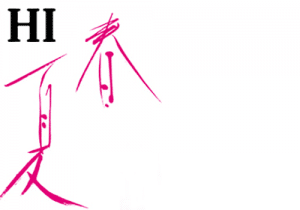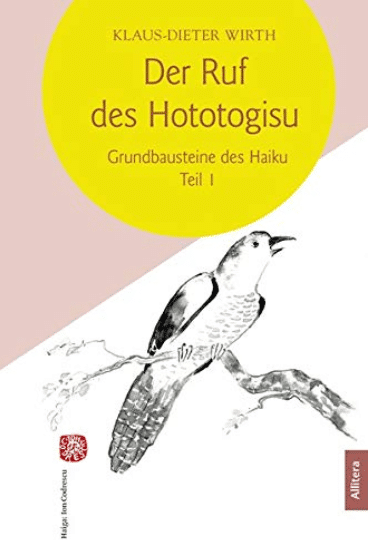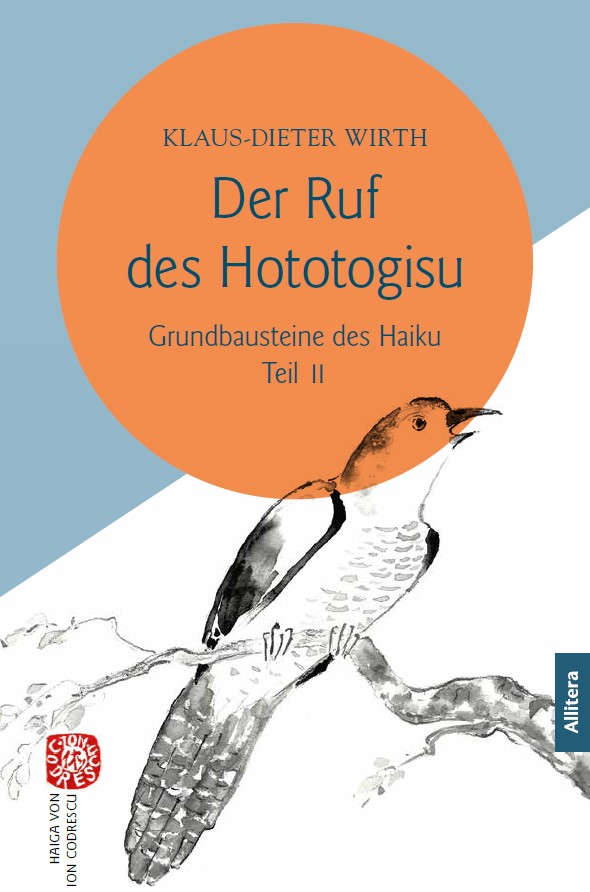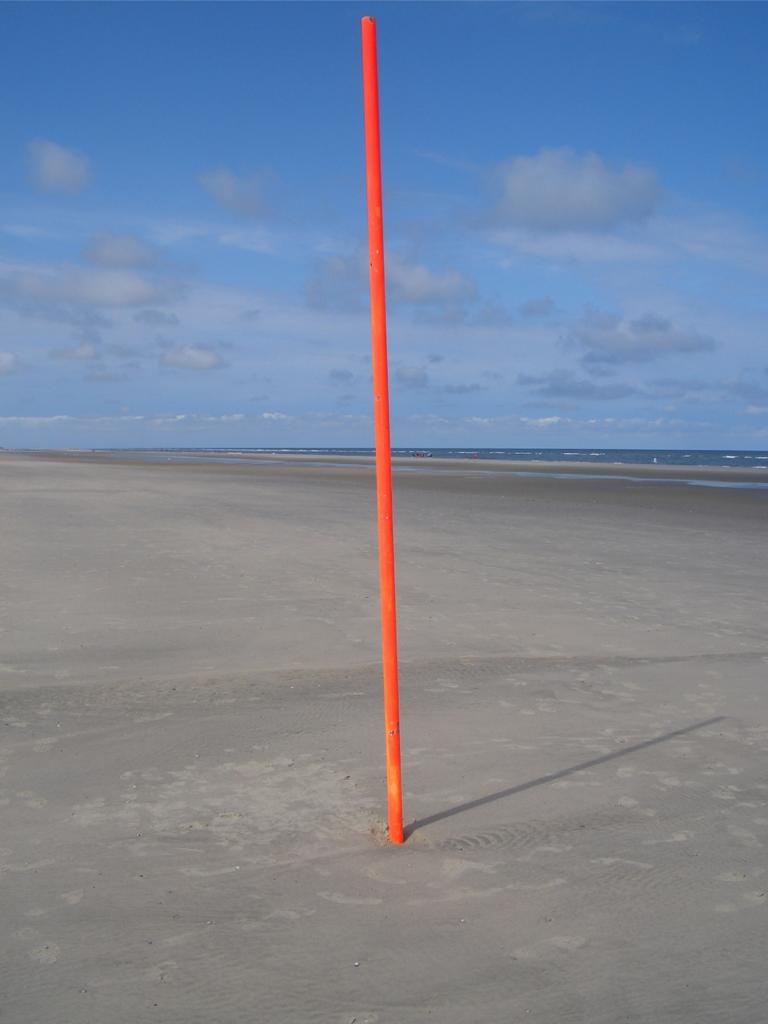Ausgewählte Haiku
 Übersetzungen der Haiku: eine Zusammenarbeit von Emiko Miyashita, Claudia Brefeld und Eva Moering
Übersetzungen der Haiku: eine Zusammenarbeit von Emiko Miyashita, Claudia Brefeld und Eva Moering
»Hier können Idee und Hintergrund zu diesem Projekt nachgelesen werden.
Auswahl und Kommentierung von Masako Kakutani,
HIA-director
雪深く/二羽の鳥が跳ねる/マルメロの茂みの中
deep snow
two birds hop inside
the quince bushtiefer Schnee
zwei Vögel hüpfen in
den Quittenstrauchブルース・ロス ROSS, Bruce (USA)
Im tiefen Schnee hüpfen zwei Vögel in den Quittenstrauch. Der Wald ist ganz mit reinem weißen Schnee bedeckt. In der Stille, die alle Geräusche in sich aufsaugt, kann man einen gewissen Klang des Lebens hören. „tiefer Schnee / der Quittenbusch /“ – durch die Verwendung von Substantiven fängt das Haiku eine ruhige Atmosphäre ein. „zwei Vögel hüpfen“ – durch die Verwendung von Verben betont es ihre Bewegung. Es ist ein poetisches Werk mit stilistischer Sensibilität.
せめぎ合ふ流氷湾を閉ざしけり
semegiau / ryūhyō wan o / tozashikeri
Eisschollen
miteinander kämpfend
verschließen die Bucht熊谷佳久子 KUMAGAI Kakuko
In Japan ist das Treibeis aus dem Ochotskischen Meer, nordöstlich von Hokkaido, sehr bekannt. Ich habe einmal eine Tour von der Stadt Abashiri aus mit einem Eisbrecher gemacht. Die Stadt ist bei Touristen sehr beliebt und es ist atemberaubend, die Eisplatten zu sehen, die nacheinander in die Bucht kommen. Die Beschreibung in diesem Haiku von riesigen Eisblöcken, die „zusammenstoßen“, ist kraftvoll und realistisch. Sie stürmen in die Bucht und schließen sie schließlich. Es ist ein großartiges Naturschauspiel, das sich seit Menschengedenken immer wieder wiederholt.
春雨や夜も昼もともす書斎の灯
harusame ya / yo mo hi mo tomosu / shosai no hi
Frühlingsregen
von morgens bis abends
erleuchtet ein Licht mein Arbeitszimmer白根 順子 SHIRANE Junko
Es hat die ganze Zeit geregnet. Im Gegensatz zur Dunkelheit der Regenzeit ist der Frühlingsregen heller, aber man braucht immer noch Licht zum Lesen und Schreiben. Der Autor hat möglicherweise die ganze Zeit geschrieben. Er lässt in seinem Arbeitszimmer nicht nur nachts, sondern auch tagsüber Licht brennen. Seine Familie beobachtet sicher das Licht, das aus seinem Arbeitszimmer kommt, und versucht, ihn nicht zu sehr zu stören. Die Stimmung des Frühlingsregens verleiht diesem Gedicht seinen Charme.
どこも見てをらず鮫の眼浅みどり
dokomo mite / orazu same no me / asamidori
Blick ins Leere
Haifischaugen
blassgrün内村 恭子 UCHIMURA Kyoko
Ist es ein Hai, der vom Fang aussortiert, im Hafen liegt? Oder ist es ein Hai, der langsam in einem Aquarium herumschwimmt? Schließlich muss der Hai leben. Andernfalls würden die leeren Augen des Hais mit ihrem unklaren Beobachtungspunkt nicht lebendig sein. „blassgrün“ am Ende suggeriert ein Gefühl der Vergeblichkeit.
潮騒は時に小夜曲玉椿
shiosai wa / toki ni sayokyoku / tamatsubaki
Des caméllias,
le bruit des vagues
est par fois une sérénadedas Rauschen der Wellen
ist manchmal eine Serenade
Kamelienヘンリー 殿様 HENRY Tonosama
Der Autor steht nachts am Strand und lauscht den Gezeiten. Oder vielleicht lauscht er den Gezeiten, während er in einem Gasthaus am Meer übernachtet und seine Stirn an das Fenster presst. Das wiederholte Rauschen der Wellen ist ruhig, wie eine Serenade. Die Nacht geht weiter und überlässt uns dem angenehmen Klang. Kamelienbäume wachsen oft wild auf einem Kap, und auch hier muss es Kamelien geben. Die Kombination von kleiner Kamelie und Serenade vertieft die poetische Stimmung.
Und hier fünf weitere Haiku – ausgesucht von Emiko Miyashita
人形も腹話術師も風邪心地
ningyō mo / fukuwajutsushi mo / kazegokochi
sowohl die Marionette
als auch der Bauchredner
ein Erkältungsschauer塚月 凡太 TSUKAZUKI Bonta
鎮まれと諭すがごとく春の雪
shizumare to / satosu ga gotoku / haru no yuki
Beruhige dich!
Ermahnend
fällt der Frühlingsschneeちづこ CHIZUKO
駆け上る空へ百頭牛の凧
kakenoboru / sora e hyakutō / ushi no tako
Hundert Kühe
laufen den Himmel hinauf –
ein Drachenzug水田 博子 MIZUTA Hiroko
夏帽に触れて返礼町の医者
natsubō ni / furete henrei / machi no isha
der Hausarzt
seinen Sommerhut berührend
erwidert er den Gruß住吉 ミナ SUMIYOSHI Mina
撫牛に元朝の雪数センチ
nadeushi ni / ganchō no yuki / sū sencha
Neujahrsmorgen –
auf dem Bildnis des heiligen Ochsen
einige Zentimeter Schnee各務 惠紅 KAKAMI Keikou







